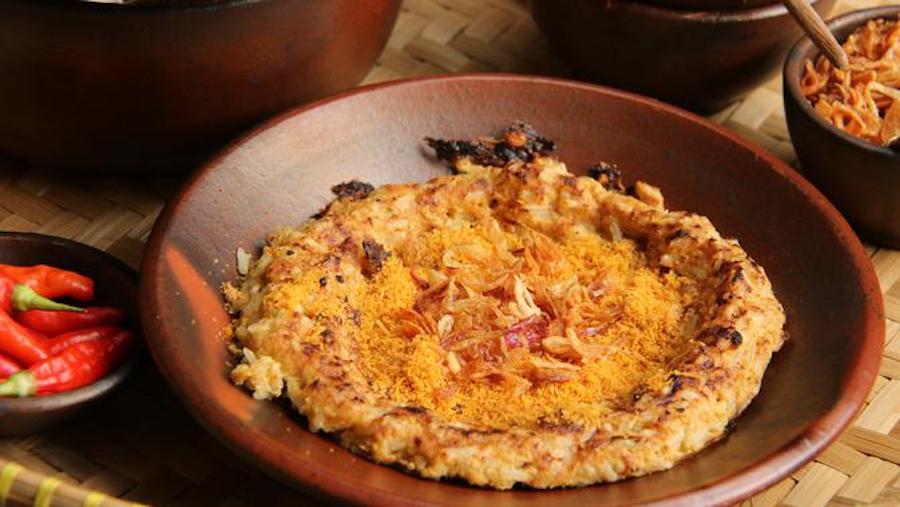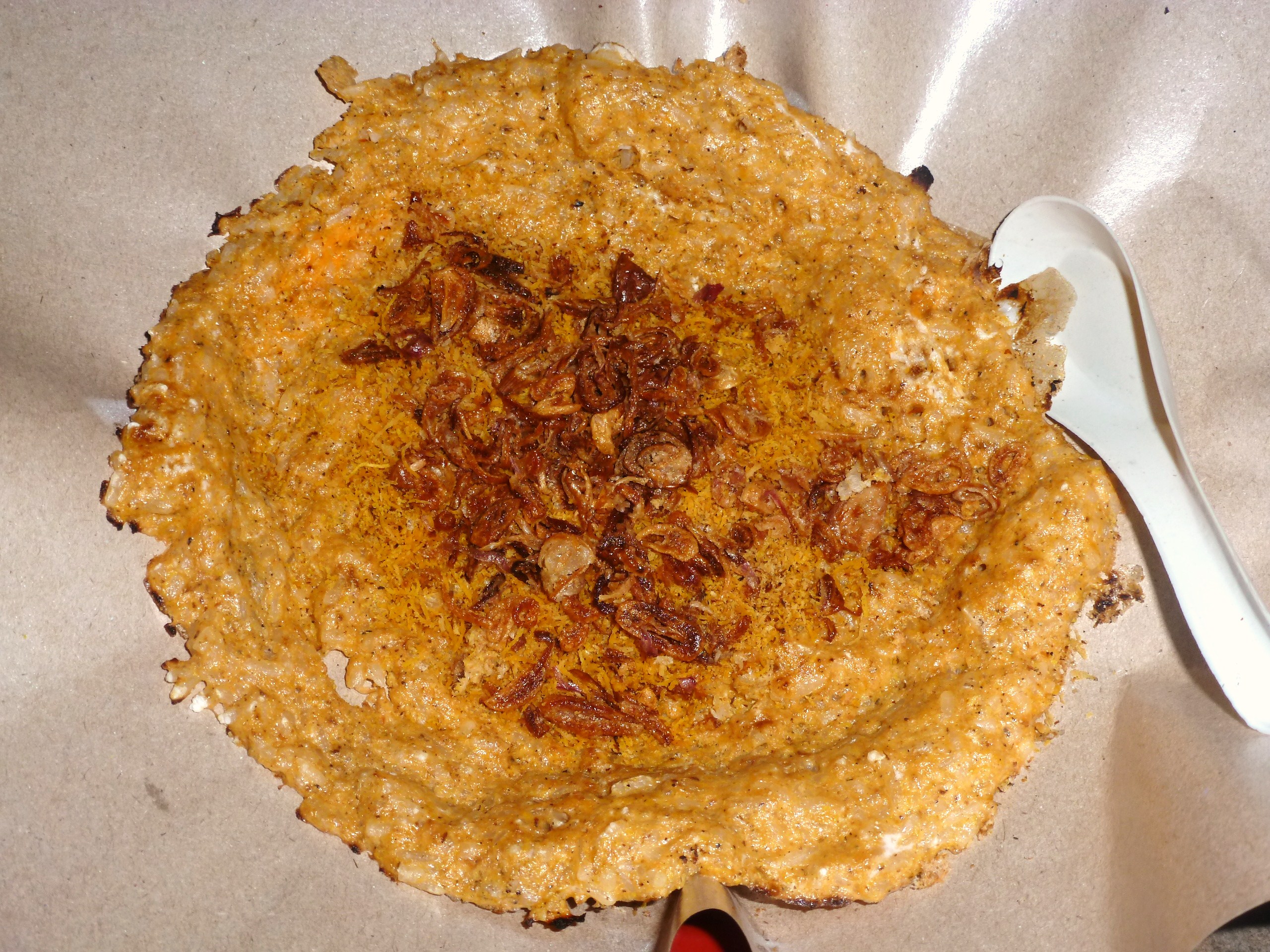A Culinary Journey Through Kerak Telor: From Humble Beginnings to Modern Delights
Related Articles
- A Culinary Journey Through Morocco: Unveiling The Secrets Of Tagine Cooking
- A Deep Dive Into Larb: Exploring Thailand’s Flavorful, Versatile Dish
- A Journey Through The Layers Of Bibimbap: A Culinary Adventure In Every Bowl
- A Journey Through The Creamy Depths Of Carbonara: From Humble Origins To Modern Mastery
- A Journey Through The World Of Turkish Kebabs: From Ancient Origins To Modern Flavors
Introduction
Discover everything you need to know about A Culinary Journey Through Kerak Telor: From Humble Beginnings to Modern Delights
A Culinary Journey Through Kerak Telor: From Humble Beginnings to Modern Delights

Kerak Telor, a traditional Indonesian street food, is more than just a simple egg omelet. It’s a testament to the country’s rich culinary heritage, a flavorful journey through history and innovation, and a delightful treat that captivates taste buds across generations. This article delves into the fascinating world of Kerak Telor, exploring its origins, culinary techniques, variations, and tips for crafting this iconic dish.
A History of Flavor: The Origins of Kerak Telor
The story of Kerak Telor begins in the bustling streets of Jakarta, Indonesia’s capital city. Its origins, shrouded in the mists of time, are believed to trace back to the early 20th century, during the Dutch colonial era. The exact genesis remains a mystery, but several theories offer tantalizing glimpses into its past.
One popular theory suggests that Kerak Telor emerged as a fusion of Javanese and Betawi culinary traditions. The Javanese influence is evident in the use of sticky rice, a staple in their cuisine, while the Betawi, indigenous people of Jakarta, contributed their unique culinary practices and flavors.
Another theory points to the influence of Chinese street food, particularly the "kue pancong" (a sweet, savory pancake), which shares similarities with Kerak Telor in its use of rice flour and coconut milk. The addition of eggs, a common ingredient in both Javanese and Chinese cooking, completes the picture.
Regardless of its precise origin, Kerak Telor quickly gained popularity, becoming a staple of Jakarta’s street food scene. Its simple yet delicious flavors, combined with its affordability, made it a favorite among locals and visitors alike.
The Essence of Tradition: Key Ingredients and Techniques
Kerak Telor’s magic lies in its simplicity and the harmonious blend of flavors. The core ingredients, readily available and easily accessible, are:
- Sticky Rice: The foundation of Kerak Telor, sticky rice, also known as glutinous rice, provides a chewy, satisfying texture. It’s soaked in water and ground into a fine paste, forming the base for the omelet.
- Coconut Milk: Adding richness and a subtle sweetness, coconut milk is a key ingredient in Kerak Telor. It’s incorporated into the rice paste, lending a creamy texture and enhancing the overall flavor profile.
- Eggs: The star ingredient, eggs bind the mixture and contribute a delicate, savory flavor. Typically, one or two eggs are used per serving, depending on preference.
- Shallots: A staple in Indonesian cuisine, shallots add a distinct aroma and savory depth to the dish. They’re finely chopped and sautéed in oil before being added to the rice paste.
- Shrimp Paste: Also known as "terasi," this fermented shrimp paste provides a unique umami flavor and a pungent aroma. It’s used sparingly, adding a complex dimension to the dish.
- Spices: A blend of spices, often including turmeric, cumin, and chili peppers, is used to enhance the flavors and add a touch of warmth.
- Oil: The oil, typically vegetable or coconut oil, is used for cooking and frying, imparting a crispy texture to the Kerak Telor.

The preparation of Kerak Telor involves a delicate balance of techniques, honed over generations:
- Preparation: The sticky rice is soaked and ground into a paste, then combined with coconut milk, shallots, shrimp paste, and spices. This mixture is then cooked in a flat pan, creating a thin, crispy base.
- Egg-cellent Addition: Once the base is set, the eggs are whisked and poured over the rice mixture. They cook quickly, creating a soft, fluffy layer that binds the ingredients together.
- The Art of Frying: The Kerak Telor is then fried on both sides until golden brown and crispy. The crispy exterior and soft, flavorful interior create a textural contrast that delights the senses.
A Culinary Canvas: Variations and Innovations

While the traditional recipe remains cherished, Kerak Telor has evolved over time, embracing culinary innovation and regional variations. These adaptations offer a diverse tapestry of flavors and textures, showcasing the dish’s versatility.
- Sweet and Savory Delights: Some variations incorporate sweet elements, like sugar or palm sugar, adding a touch of sweetness to the savory base. This sweet and savory combination caters to diverse palates, offering a unique flavor experience.
- Meat Lovers’ Paradise: For those seeking a heartier meal, variations featuring meat, such as shredded chicken or beef, are available. These additions provide a richer flavor and satisfying texture, making it a more substantial option.
- Seafood Sensations: The coastal regions of Indonesia have embraced seafood variations, incorporating prawns, crabs, or fish into the Kerak Telor. These additions add a distinct seafood flavor and enhance the dish’s nutritional value.
- Modern Twists: Modern interpretations of Kerak Telor have emerged, incorporating contemporary culinary techniques and ingredients. These variations, often found in upscale restaurants, showcase the dish’s potential for sophistication and refinement.
A Feast for the Senses: Tips for Creating Delicious Kerak Telor
Crafting the perfect Kerak Telor requires a blend of technique and intuition. Here are some valuable tips to help you create a delicious and authentic experience:
- Rice Perfection: Choose high-quality sticky rice for the best texture. Soaking it for a sufficient amount of time, typically 3-4 hours, ensures proper hydration and a smooth paste.
- Coconut Milk Magic: Opt for fresh coconut milk for a richer flavor and a creamy texture. Don’t use canned coconut milk as it tends to be too thick and can alter the dish’s consistency.
- Spice Symphony: Experiment with different spices to create your own flavor profile. Remember, a little goes a long way, so start with small amounts and adjust according to your taste preferences.
- The Art of Frying: Use a flat pan with a non-stick surface for even cooking. Ensure the oil is hot enough to create a crispy exterior without burning the Kerak Telor.
- The Perfect Flip: Flipping the Kerak Telor is crucial for even cooking. Use a spatula to gently lift the edges and flip it over carefully, avoiding breakage.
- Garnish Glory: Enhance the presentation and flavor with a variety of garnishes. Traditional options include chopped green onions, fried shallots, or a sprinkle of ground chili peppers.
- The Perfect Accompaniment: Serve Kerak Telor with a side of sweet chili sauce or a refreshing cucumber salad for a balanced and flavorful meal.
Beyond the Plate: Kerak Telor’s Cultural Significance
Kerak Telor is more than just a delicious snack; it embodies the essence of Indonesian culture. It’s a symbol of Jakarta’s street food heritage, a testament to the country’s culinary creativity, and a source of pride for its people.
- Street Food Icon: Kerak Telor is synonymous with Jakarta’s street food scene, a vibrant and integral part of the city’s culinary landscape. It’s a reminder of the city’s history, its people, and their love for food.
- Cultural Heritage: The dish reflects the diverse culinary influences that have shaped Indonesian cuisine. It’s a testament to the country’s ability to blend tradition with innovation, creating unique and delicious dishes.
- Community Gatherings: Kerak Telor is often enjoyed at community gatherings, festivals, and celebrations. Its presence brings people together, fostering a sense of shared experience and cultural identity.
A Culinary Legacy: The Future of Kerak Telor
As Indonesia continues to embrace culinary innovation, Kerak Telor is poised to evolve and adapt. The dish’s inherent versatility allows for endless possibilities, inspiring chefs and food enthusiasts to create new and exciting variations.
- Modern Interpretations: Upscale restaurants are reimagining Kerak Telor, incorporating modern techniques and ingredients, creating refined and sophisticated versions of the classic dish.
- Global Appeal: Kerak Telor’s unique flavor profile and cultural significance are attracting attention from international audiences. Its presence in global food festivals and online platforms is helping to expand its reach.
- Preserving Tradition: Efforts are underway to preserve the traditional recipe and techniques, ensuring that future generations can continue to enjoy this culinary treasure.
Conclusion: A Journey of Taste and Tradition
Kerak Telor is a testament to the power of food to connect us to our history, our culture, and each other. Its humble origins and enduring popularity are a reminder that the most cherished dishes are often the simplest. As we explore the world of Kerak Telor, we embark on a culinary journey through time, tradition, and innovation, discovering a dish that is both delicious and culturally significant. Whether enjoyed on a bustling street corner or in a refined dining establishment, Kerak Telor continues to enchant and delight, solidifying its place as a culinary icon of Indonesia.
Closure
We hope this article has helped you understand everything about A Culinary Journey Through Kerak Telor: From Humble Beginnings to Modern Delights. Stay tuned for more updates!
Don’t forget to check back for the latest news and updates on A Culinary Journey Through Kerak Telor: From Humble Beginnings to Modern Delights!
Feel free to share your experience with A Culinary Journey Through Kerak Telor: From Humble Beginnings to Modern Delights in the comment section.
Stay informed with our next updates on A Culinary Journey Through Kerak Telor: From Humble Beginnings to Modern Delights and other exciting topics.






